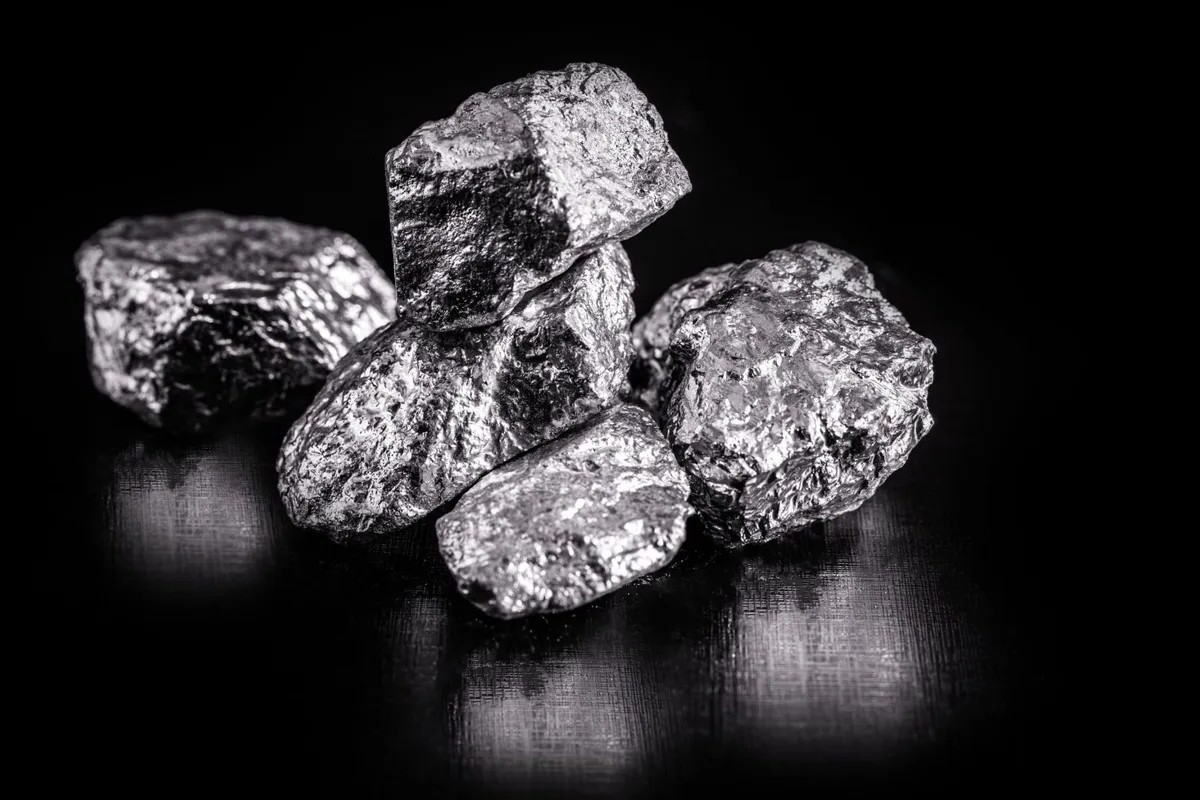
Tantalum is a fascinating element with a wide range of applications and interesting properties. Did you know that tantalum is highly resistant to corrosion and is often used in medical implants and electronic components? This rare, blue-gray metal is found in minerals like columbite and tantalite. It has a high melting point, making it ideal for high-temperature applications. But what else makes tantalum so special? From its role in the production of superalloys to its use in capacitors for smartphones and computers, tantalum is a key player in modern technology. Let's dive into 29 intriguing facts about tantalum that highlight its importance and versatility.
What is Tantalum?
Tantalum is a rare, hard, blue-gray metal known for its high melting point and corrosion resistance. It's used in various industries, from electronics to medical devices. Let's dive into some fascinating facts about this unique element.
-
Symbol and Atomic Number: Tantalum's chemical symbol is Ta, and its atomic number is 73.
-
High Melting Point: Tantalum has an incredibly high melting point of 3,017°C (5,463°F), making it one of the most heat-resistant metals.
-
Discovery: Swedish chemist Anders Gustaf Ekeberg discovered tantalum in 1802.
-
Named After Mythology: The name "tantalum" comes from Tantalus, a character in Greek mythology who was punished by being made to stand in water that receded when he tried to drink.
-
Corrosion Resistance: Tantalum is highly resistant to corrosion by acids, which makes it valuable for chemical processing equipment.
Uses of Tantalum
Tantalum's unique properties make it indispensable in various applications. Here are some of the primary uses:
-
Electronics: Tantalum capacitors are essential in modern electronics, found in devices like smartphones, laptops, and gaming consoles.
-
Medical Implants: Due to its biocompatibility, tantalum is used in surgical implants, such as hip replacements and dental instruments.
-
Aerospace: Tantalum's heat resistance makes it ideal for use in jet engines and other aerospace components.
-
Chemical Processing: Tantalum is used in equipment that handles corrosive chemicals, such as heat exchangers and reactors.
-
Optical Lenses: Tantalum oxide is used in the production of high-quality optical lenses.
Tantalum in Nature
Tantalum is not found freely in nature but is extracted from minerals. Here are some facts about its natural occurrence:
-
Minerals: Tantalum is primarily extracted from minerals like tantalite and columbite.
-
Global Production: The largest producers of tantalum are Australia, Brazil, and Canada.
-
Recycling: Tantalum is highly recyclable, with a significant portion of the metal being reclaimed from electronic waste.
-
Conflict-Free: Efforts are made to ensure that tantalum is sourced from conflict-free regions to avoid funding armed conflicts.
-
Rare Earth Metal: Tantalum is considered a rare earth metal due to its scarcity and the difficulty of extracting it from ores.
Physical and Chemical Properties
Tantalum's properties make it stand out among other metals. Here are some key characteristics:
-
Density: Tantalum has a high density of 16.69 g/cm³, making it one of the densest elements.
-
Ductility: Despite its hardness, tantalum is highly ductile, meaning it can be drawn into thin wires.
-
Electrical Conductivity: Tantalum is a good conductor of electricity, which is why it's used in electronic components.
-
Oxidation Resistance: Tantalum forms a protective oxide layer that prevents it from oxidizing, even at high temperatures.
-
Non-Magnetic: Tantalum is non-magnetic, making it useful in applications where magnetic interference must be avoided.
Environmental and Economic Impact
Tantalum plays a significant role in both environmental and economic contexts. Here are some insights:
-
Sustainable Mining: Efforts are being made to mine tantalum sustainably, reducing environmental impact.
-
Economic Value: Tantalum is a valuable commodity, with prices fluctuating based on demand and supply.
-
Strategic Metal: Tantalum is considered a strategic metal, essential for national security and technological advancement.
-
Environmental Concerns: Mining tantalum can have environmental impacts, including habitat destruction and water pollution.
-
Conflict Minerals: Tantalum is one of the "conflict minerals," and regulations are in place to ensure ethical sourcing.
Fun and Lesser-Known Facts
Here are some fun and lesser-known facts about tantalum that might surprise you:
-
Superconductivity: Tantalum becomes superconductive at very low temperatures, making it useful in scientific research.
-
Jewelry: Tantalum is sometimes used in jewelry, especially for wedding bands, due to its durability and unique color.
-
Space Exploration: Tantalum is used in space exploration equipment, including satellites and space probes.
-
Alloys: Tantalum is often alloyed with other metals to improve their properties, such as strength and corrosion resistance.
Tantalum's Impact and Future
Tantalum's unique properties make it a game-changer in various industries. From electronics to medical devices, this metal's versatility is unmatched. Its high melting point and resistance to corrosion ensure durability in extreme conditions. Smartphones, laptops, and tablets rely on tantalum capacitors for efficient performance. In the medical field, it's used in surgical instruments and implants due to its biocompatibility.
Looking ahead, tantalum's role in green technology is promising. It's essential for electric vehicles and renewable energy systems. However, ethical sourcing remains a challenge. Ensuring conflict-free tantalum is crucial for sustainable development.
Understanding tantalum's significance helps us appreciate its contributions to modern life. As technology advances, so will the demand for this remarkable element. Keep an eye on tantalum; it's shaping the future in ways we might not yet fully grasp.
Was this page helpful?
Our commitment to delivering trustworthy and engaging content is at the heart of what we do. Each fact on our site is contributed by real users like you, bringing a wealth of diverse insights and information. To ensure the highest standards of accuracy and reliability, our dedicated editors meticulously review each submission. This process guarantees that the facts we share are not only fascinating but also credible. Trust in our commitment to quality and authenticity as you explore and learn with us.
